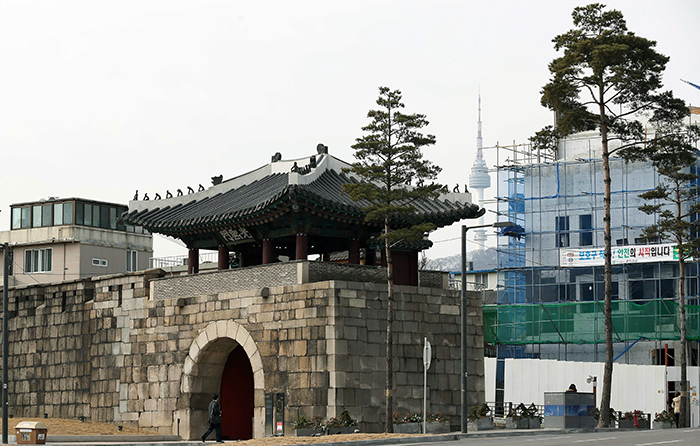
Gwanghuimun Gate, one of the capital’s four small gates from the Joseon era, is open for the first time in 39 years on February 18. Behind the gate stands the N Seoul Tower. (photo: Jeon Han)
Seoul, the capital of Korea since the 1390s, was a walled city surrounded by ramparts during the Joseon Dynasty (1392-1910). At the time, to enter the city, one had to pass through one of its eight gates: the four great gates of Heunginjimun in the east, Donuimun in the west, Sungnyemun in the south and Sukjeongmun in the north; and, the four small gates of Hyehwamun in the east, Souimun in the west, Gwanghuimun in the south and Changuimun in the north.
One of the four small gates, Gwanghuimun Gate in the southern part of the fortress wall, has now opened its doors for the first time in 39 years. The historical gate has been closed for restoration since 1975. Now, it is open to the public around the clock, all year round.
Gwanghuimun Gate was originally built in the fortress walls of the capital between Sungnyemun Gate and Heunginjimun Gate in 1396. The gate is also known as “Namsomun Gate,” literally meaning “Small Southern Gate,” and was also called “Sigumun Gate,” as corpses were carried out of the city through this gate. Its name, “Gwanghuimun,” means, “The Gate of Bright Light.”
The gate was completed in its present form in 1719 when the gatehouse was installed above the walls and the signboard was hung. The original gatehouse and signboard, however, were destroyed during the Korean War (1950-53).
Now, the restored gate, moved slightly to the south of its original position to accommodate traffic, has opened its doors to visitors once again.
By Jeon Han, Sohn JiAe
Korea.net Staff Writers
hanjeon@korea.kr
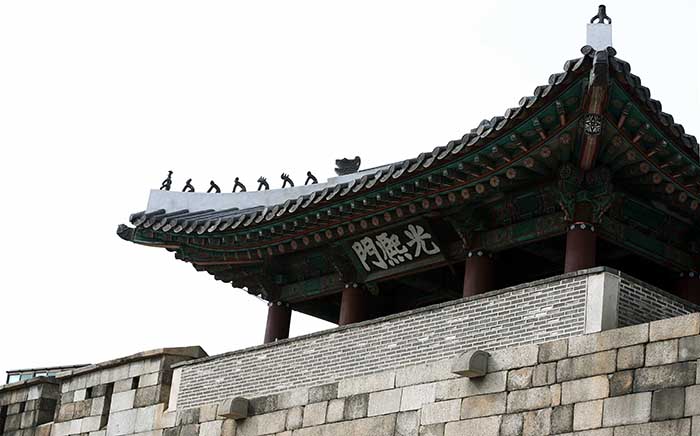
The Joseon-era Gwanghuimun Gate, as is written on its signboard, was built in 1719 and also went by the names “Sigumun Gate” or “Nansomun Gate.” The gate was one of the only egresses during the Joseon era for corpses to be taken out of the city, embracing the sorrows of the people. (photo: Jeon Han)
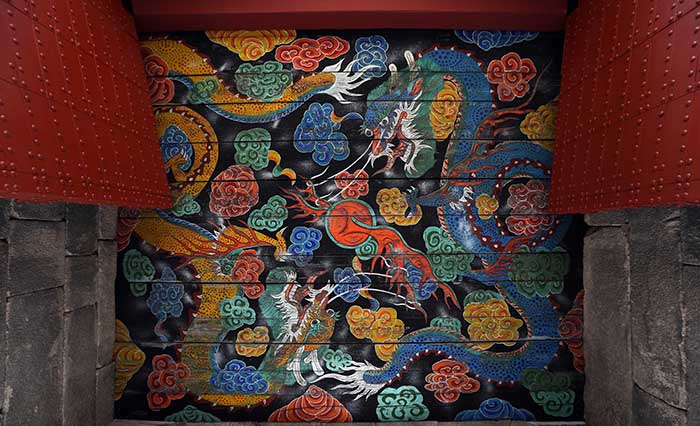
Entering Gwanghuimun Gate, one can see a painting above depicting a blue dragon and a yellow dragon fighting for a magical jewel, known as the cintamani. (photo: Jeon Han)
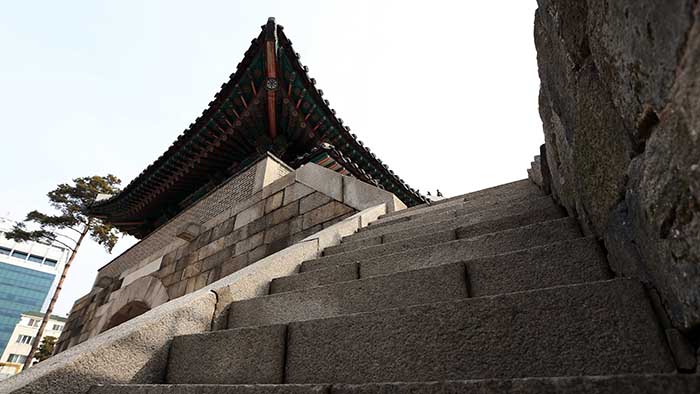
Climbing the stairs on the inside of Gwanghuimun Gate, one can see the gatehouse up close and can stroll along part of the fortress wall. (photo: Jeon Han)
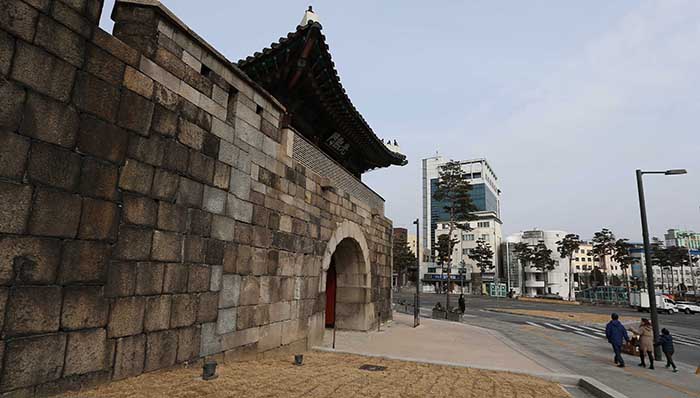
Gwanghuimun Gate, one of the four Joseon-era small gates, is open to the public around the clock, all year round. (photo: Jeon Han)